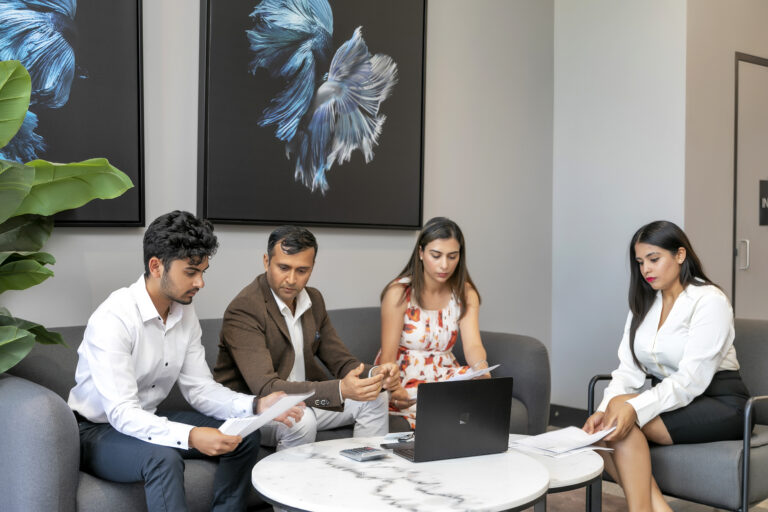What features should you look for in a Melbourne apartment?
When looking for an apartment in Melbourne, certain factors need to be taken into account. Such as the size and location of the apartment development or complex, the layout and design of the unit itself, the suburb’s future potential, and many more.
Smaller apartment projects and blocks are found more appealing, as they have cheaper body corporate costs and potentially higher resale prices than units in large complexes.
Top apartment buying tips are:
While buying a home on your own or as an investment, involve a lot of money which makes decision making difficult. Hence we have come to the rescue. We have created a list of all major points or tips that you might need to consider while buying a home.
Location
When looking for buying an apartment in Melbourne, the location is the first and foremost crucial thing to consider. Melbourne offers several busy inner-city areas with cafes, but if you want to live close to the city and enjoy this lifestyle, you may have to compromise on the space of the apartment.
Buying in the suburbs may have an impact on capital growth and, as a result, your return on investment. This is especially true in high-density residences, where there is an oversupply.
Buying an apartment in Melbourne’s inner-ring suburbs, close to public transportation and local amenities, will always be the better option. These locations have fewer supplies, better quality, and lower density.
Look for flats in key and rapidly rising areas. These areas are constantly popular since they offer an appealing lifestyle with a superabundance of pubs, cafes, and stores.
Internal Layout
What is the apartment’s internal layout? Is it going to help you in getting a loan? Some lenders won’t provide you with a loan if your apartment is less than 50 square metres. This usually excludes balconies and parking spaces. Inspect the interior area properly and conduct your research rather than relying on the agent’s word.
You should also think about how liveable such a little space is. Will it is spacious enough for your furniture and things, will there be room for pets, will you be able to host guests. Does the floor plan and layout make sense? It’s just as essential as location.
It is beneficial to have windows in as many rooms as possible to maximise sunshine and provide ventilation. We recommend looking for an apartment with large rather than small spaces since this can make a space more liveable. It’s also crucial to use high-quality fixtures and fittings.
Prioritise efficient design and daylight
Apartments that are well-designed and enjoyable to live in have a much higher chance of appreciation over time. Keep this in mind while searching and look for the following characteristics:
- Every room has a window, and the common areas have huge windows. The importance of natural light and ventilation in making apartments comfortable and livable cannot be overlooked.
- Instead of long, wide spaces are preferred. Many apartments are long and narrow, but living in a wider place is often preferable.
- You should also think about the appliances and fixtures. If they’re of good quality, the rest of the apartment complex will most likely be finished to the same high standard.
Avoid high-density region
Avoid high-density new construction, especially if the building has a vehicle stacker or amenities like gyms, pools, and leisure rooms that you are not going to utilise regularly. They are incredibly expensive to maintain, and it will be seen in the owners corporation fees.
If you’re buying a house as an investment, you’ll also need to think about who will rent it. Again, if your apartment is in a high-density region, there’ll be a lot of supply, and you might have trouble filling your rental.
Look at medium to low-density region
Concentrate on older medium to low-density apartments built in the early 2000s. Because they don’t have expensive devices like stackers and elevators. They usually have lower body corporate fees. These structures or buildings feature a more traditional floorplan and are built with higher quality materials. They used to utilise quality products like bricks back in the day.
In general, the smaller the number of apartments in the development, the better. This is because if you resell in a large complex, there are several other similar flats in the building at the same time. This may result in a lower sale price.
Consider the Infrastructure and Future
Another factor to examine is the suburb’s long-term future. You might wish to talk to a real estate agent or the city council about planned projects in the area where you want to buy an apartment. A large planned apartment development next door could hide your view and decrease your resale value if many other similar homes come on the market.
To buy wisely, you must think about the future. Discuss any proposed projects in the immediate neighbourhood around your unit with your local agent and the city council. Take extra precautions to check what’s planned for neighbouring. Check whether it won’t block your view.
And some things more to think about:
- The architecture of the building is significant since it will influence how you or your renter live there. How many stairs do you have to climb to get your groceries or other essentials to your floor? Is every window open? Are all of the doors able to open without slamming into the cabinetry or the toilet? These factors have a significant impact on the property’s growth potential.
- Consider the amount of natural light entering the apartment. Agents frequently turn on all the lights before an inspection to give the impression that everything is in order. But if the windows face only east, you’ll only get light in the morning.
- The layout is quite important. Do you have a toilet door that opens directly into the kitchen? Or do your guests have to use the bathroom through your bedroom?
- An infrastructure project, such as stores or a cultural centre, on the other hand, could boost the attraction of a certain suburb’s lifestyle, as well as the resale value of your flat.
Remember that this could be the most money you’ve ever spent in a single transaction. So be sure you’re making an informed decision.
How do I choose an apartment in Melbourne?
When looking for an apartment in Melbourne, consider what you want to get out of it. If you’re looking for a high-quality lifestyle with easy access to amenities, you might want to consider a liveable suburb. Though keep in mind that the more liveable a suburb is, the higher the price is. If you’re looking to invest then you may look for a suburb that yields higher returns in future.
If the liveability of a suburb is important to you, you may want to look for regions with the best amenities and lifestyle. The following are the top ten most livable suburbs in the Greater Melbourne area:
- Fitzroy
- Carlton
- East Melbourne
- Fitzroy North
- North Melbourne
- Princes Hill
- Collingwood
- Cremorne
- Carlton North
A suburb’s liveability score is influenced by amenities like parks, shops, schools, public transportation, and healthcare facilities, as well as walkability which refers to how accessible the neighbourhood is on footpaths.
Thinking to buy an apartment in Melbourne?
Dreaming to buy a home soon?
Contact Scouty to discuss your financing options, especially if you’re buying a small apartment or off the plan property. Alternatively, if you want to look at several apartments, our buyer’s agents may show you some lovely apartments you may not have considered.
If at all possible try to purchase a home that faces a park or a calm residential street so that you never lose your view.
Scouty’s agents are specialists in the Melbourne apartment market, and we can assist you in making the best possible purchase at the best price.
To find out more about us and our work. Get in touch today.





